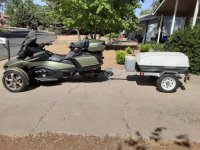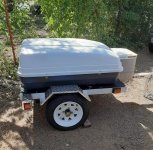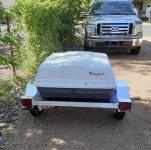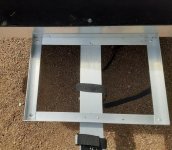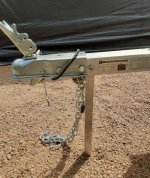mhan
Member
Just finished my homebuilt Spyder trailer for $460. Am very pleased with the result.
Aluminum Ultra Tow trailer kit 48x40 (Northern Tool) $409. delivered to Az
Voyager 18cf roof top carrier (Craigslist) $40.
Plywood deck and fasteners $10.
Took about 8hrs to build including removing 2 leaf on each leaf spring assembly, wheel bearing pack and wiring.
Loaded it up with about 150 lbs -- distributed for 20lbs on the tongue. Took it out on the Hwy at 65-70mph. Couldn't tell it was back there.
Did bounce a little at first. Discovered the tire pressure out of the box was 40psi. Reduced to 20psi and solved that issue.
Aluminum Ultra Tow trailer kit 48x40 (Northern Tool) $409. delivered to Az
Voyager 18cf roof top carrier (Craigslist) $40.
Plywood deck and fasteners $10.
Took about 8hrs to build including removing 2 leaf on each leaf spring assembly, wheel bearing pack and wiring.
Loaded it up with about 150 lbs -- distributed for 20lbs on the tongue. Took it out on the Hwy at 65-70mph. Couldn't tell it was back there.
Did bounce a little at first. Discovered the tire pressure out of the box was 40psi. Reduced to 20psi and solved that issue.

